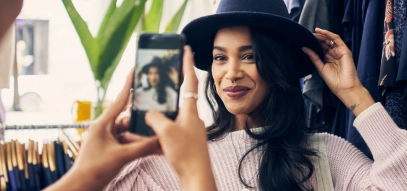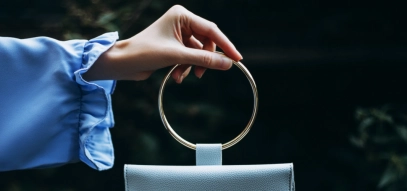The luxury fashion business model has long revolved around offering customers pieces whose value endures. A watch passed down through the generations, a hand-sewn gown that still elicits a sensory thrill years after it was tailored to perfection, or fine leather Italian bag gifted between friends to celebrate a milestone.
But the sector is now at a crossroads. Houses and brands that carry on simply doing what they’ve always done risk falling behind. Why? Customer profiles are changing, expectations of brands are wider and higher than ever, and the technological possibilities to perfect the purchasing and post-purchasing experiences are near-limitless.
To read about the factors influencing the luxury business model makeover – see Mazars’ ‘Conscious, collaborative, connected’ here.
Losing control, gaining customers
In today’s competitive marketplace, luxury businesses have to match their technological capabilities with their traditional offering: only the best will do. However, technology is a curious collaborator for luxury fashion businesses. High-end brands have been reluctant to cede control to intermediaries over how, where and when their products are available. Yet failure to invest in and implement technology will mean missing out on reaching important and new customer cohorts, including Generation Z, affluent consumers in China and HENRYs (high earners not rich yet) worldwide.
These groups – covered in more detail in our report – want to browse and buy at any time of day, anywhere in the world. They are likely to take influencer recommendations over the digital pitch on a brand’s website; they respond to online experiences; and expect omnichannel capabilities from their retail interactions. Only those brands that appreciate the full potential of technology and see how the future of luxury is wrapped up in innovation can hope to meet customer expectations.
Innovation made real
A handful of brands already embracing technology and delivering impressive results that upgrade the customer experience include:
- Gucci and its concept store in New York, which features a dedicated in-store augmented reality app that customers can use to virtually customise a product and see it in a real-world setting.
- Hublot, which allows customers to set up an online appointment with a sales associate at its Fifth Avenue store in New York, during which they can compare watches’ movements and specifications from all angles.
- Farfetch and its use of AI technology to make smart product suggestions to customers in real time, which led to a 10% increase in click-through rates in personalised email marketing.
- Chanel, which gives loyal customers the opportunity to pre-select runway or pre-collection looks they can try on in front of high-tech mirrors fitted in the brand’s Paris boutiques.
For more ways in which brands are using technology to satisfy customers, see our full report here.
Luxury authentication
In addition to enhancing the customer experience, technology is being deployed to combat counterfeiting. Fake luxury merchandise is estimated to account for 60-70% of the €3.8 trillion of annual counterfeit trade flows.
Brands have been litigating, tightening supply chains and introducing scientific techniques, in response. Authentication efforts include the Raman spectroscopy for gemstones and hard-to-remove holograms and RFID tags woven directly into a textile or label. Since 2019, luxury watchmaker Ulysse Nardin has offered a blockchain warranty certificate via Woleet for record keeping and verification, which is a reliable alternative to the physical guarantee card.
Smart circularity
While the future of the luxury sector is intertwined with technology, it will also be shaped by how it responds to increasing calls for circularity. Referring to the lifecycle of a product, greater circularity means products – and the materials that go into them – will be made to last longer and selected for their ability to be recycled and reused.
Technology has a key connecting role to play when it comes to luxury fashion and circularity. The market in recent years has seen brands collaborate with technology firms and retail platforms to drive product circularity and brand sustainability. Take ba&sh, for instance, which is launching a digital service in partnership with Arianee to enable customers to advertise their dress or handbag on multiple resale platforms by filling out a simple form and uploading a few pictures. Through the service, the buyer will receive a blockchain certificate guaranteeing the product’s authenticity. Circularity and its part in luxury’s makeover is covered in more detail in our recent report.
Broader, better service for the future
High-end fashion businesses have to move with the times: luxury brands that have excelled have collected millions of followers on social media and taken a warmer, more accessible approach to clienteling. In doing so, they are opening up their services to everyone who aspires to own €800 sneakers, or at least a tube of luxury lipstick, to participate.
Luxury companies are largely following where their customers are going – opening secondary markets, running live, digital and hybrid marketing and sales events, and moving from a focus on luxury production to a 360-degree product value chain proposition offered to many more people in the past.
All of this is backed up by data that allows brands to create personalised services and experiences, winning customer loyalty and encouraging repeat sales. Luxury customers – old and new – are used to impeccable service and our research underlines how brands planning to thrive over the long-term need use technology smartly to meet these high standards and continue to deliver the world-class services for which luxury has long been known.
To find out more about how luxury brands are adapting their business models to serve customers more effectively, download ‘Conscious, collaborative, connected’ below.







